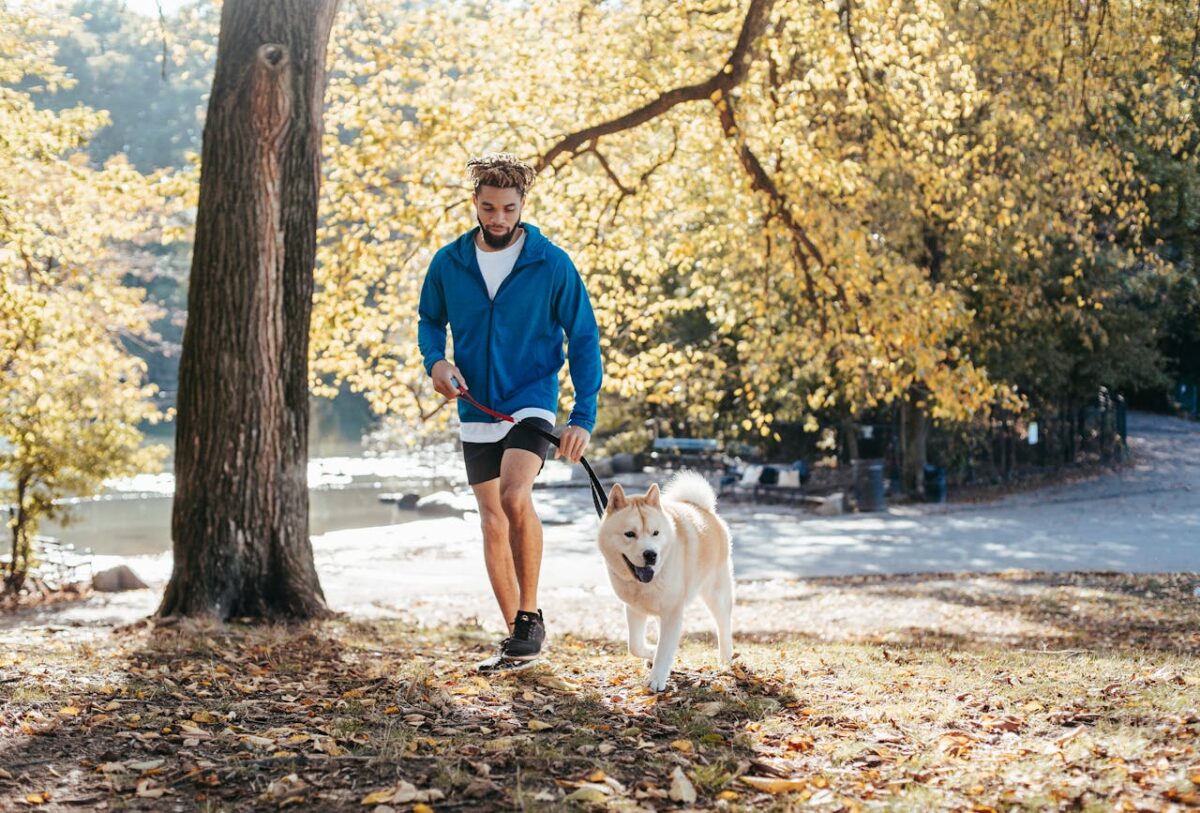Every dog owner knows that dogs absolutely love walks—so much so that some owners have to spell out W-A-L-K instead of saying the word, lest their pup go into a fit of excitement. While it’s obvious that walks make dogs happy, it’s a good idea to understand why these daily activities are so important for our furry friends.
Daily walks are a vital aspect of a dog’s physical and mental health. Regular walks help maintain your dog’s weight, improve cardiovascular fitness, and reduce behaviour problems by channelling energy into a positive activity. For indoor dogs, a walk may be the only time they really get to stretch their legs throughout the day.
While the physical benefits are self-explanatory, the mental positives must also be mentioned. Walks are crucial for your dog’s sensory stimulation, allowing them to engage with their environment—sights, sounds, and smells are all on the menu, and dogs need this sensory input to stay happy and healthy.
Preparing for a Proper Walk
Essential Supplies
Before you head out the door, make sure you have the right gear. A sturdy, comfortable leash is crucial, and a harness can provide additional control and comfort, especially for dogs that tend to pull. Short-snouted dog breeds such as Neapolitan Mastiff and French Bulldogs may require a harness, as a collar can obstruct their sensitive airways.
Always carry waste bags to clean up after your dog—it’s not just courteous; it’s often required by law. Other useful items include treats for training and a water bottle with a collapsible bowl, especially on warm days.
Weather Considerations
Checking the weather is essential for dressing both yourself and your dog appropriately. In colder climates, your dog may need a coat or boots to protect against freezing temperatures and deicing chemicals. In hot weather, avoid the midday heat to prevent overheating and burned paws from hot pavement, opting for early morning or evening walks instead.
Most dogs aren’t bothered too much by rain, but a raincoat may be a good idea if the downpour is a bit too much to handle—or if you just got them groomed and you want to preserve their good looks for a while longer.
Understanding Dog Walking Etiquette
Leash and Interaction Protocols
Keeping your dog on a leash is fundamental in most public spaces and shows respect for other pedestrians and animals. It also ensures you can quickly control your dog and prevent any untoward incidents. When encountering other dogs, maintain a respectful distance unless both owners agree to a closer interaction. Always watch for signs of discomfort or aggression in either dog.
Remember, it’s your responsibility to keep your dog under control, especially around children and other animals. Even well-trained dogs can quickly get overwhelmed if they’re approached by strangers and touched, and a panicked dog will defend themselves if they can’t escape the situation.
Dealing with Distractions
Encountering squirrels, birds, or other distractions is inevitable. Train your dog to respond to commands like ‘leave it’ or ‘focus’ to keep their attention on you during such distractions. This training helps manage their instinctual behaviours and keeps both of you safe from unpredictable situations.
Making Walks More Stimulating
Vary Your Routes
Consistency in routine is good, but variety in environment is even better. By changing your walking routes regularly, you provide your dog with a fresh array of sensory experiences. This could be as simple as walking your neighbourhood in a different pattern or choosing different streets. For more significant stimulation, try visiting various types of settings: parks, wooded areas, and beaches can offer exciting new smells, textures, and sounds that keep your dog engaged and eager to explore.
Visit Interactive Environments
Places where your dog can interact safely with other dogs, such as dog parks, provide socialisation opportunities that are crucial for your dog’s behavioural development. Make sure that these interactions are supervised and that both dogs are comfortable and displaying friendly body language before allowing them to play freely.
Include Training Sessions
Integrating short training sessions during walks can significantly enhance your dog’s focus and obedience. Use this time to practise commands like “sit,” “stay,” “come,” and “heel.” You can make these training moments more interesting by using high-value treats and changing up the commands to keep your dog guessing and engaged. This not only improves their cognitive abilities but also helps reinforce their training in different environments, ensuring they behave well both at home and in public spaces.
Training Tips for Leash Manners
Step-by-Step Training
Begin with basic leash training in a quiet environment. Use treats to encourage your dog to stay by your side rather than pulling ahead or lagging behind. Gradually introduce more distractions as your dog becomes comfortable and responsive to your commands in a controlled setting.
Handling Challenges
For dogs that are reactive or get overly excited by other animals and people, consider dedicated training sessions focusing on desensitisation and controlled exposure. Work with a professional trainer if needed, and always approach such situations with patience and consistent reinforcement.
Health and Safety Considerations
Always pace the walk to match your dog’s fitness level—puppies, seniors, and brachycephalic breeds (like Pugs and Bulldogs) may need shorter, more leisurely walks. Watch for signs of overexertion, such as excessive panting, drooling, or reluctance to continue. During the walk, ensure your dog has access to fresh water and avoid walking on surfaces that may harm their paws.
Conclusion
Incorporating the practices outlined in this guide into your daily routine can profoundly enhance the walking experience for both you and your dog. Each walk becomes an opportunity for training, bonding, and enjoyment rather than just a necessary task. Try these tips on your next walk and observe how they enrich the quality of life for both you and your beloved pet. Embrace this time with your dog, as it strengthens the bond and ensures they lead a happy, healthy life.

